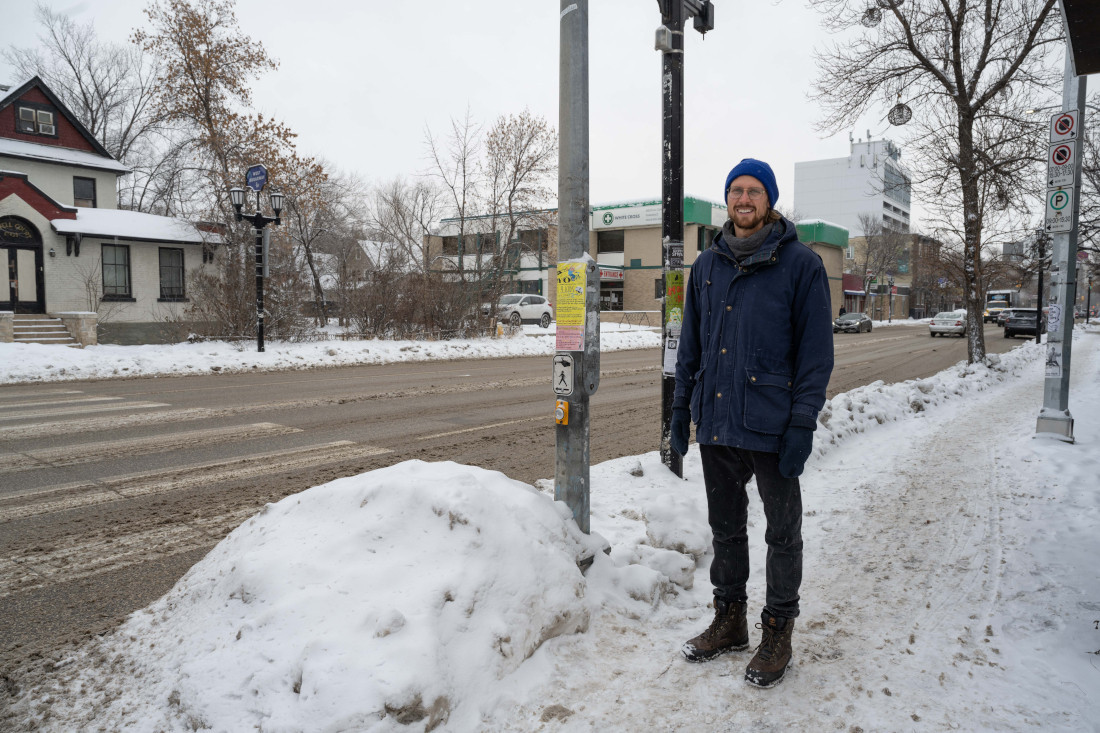An inaccessible city
Identifying problems with Winnipeg’s car-first infrastructure
Transportation and infrastructure in Winnipeg centres on cars. Many advocates for active and alternative forms of transportation see this as both a bureaucratic issue and a potential danger for other kinds of travellers, like cyclists and pedestrians.
The West Broadway Community Organization (WBCO) describes active transportation as “using human power to get around.” This includes walking, cycling, skating, wheeling and cross-country skiing, among many other methods.
Jacob Nikkel, the community-safety organizer at WBCO, mentions Broadway street as an example of poorly designed pedestrian infrastructure.
Broadway doubles as the Trans-Canada Highway route through downtown Winnipeg. This street cuts through a high-density neighbourhood, where a majority of residents use alternative forms of transportation.
For a street like Broadway, “it’s not a matter of traffic flow and vehicle speeds and cutting time off your commute for people. It’s actually an everyday threat to people's safety,” Nikkel says.
“The pedestrian crossings and the infrastructure crossing at intersections are just inadequate for the amount of cars and the amount of people who are crossing.”
Nikkel emphasizes the complexity of this situation. The divisions between advocates for active transportation and those who back car-centric structures won’t be resolved overnight.
“There's a lot of compromises that have been made because our traffic system is so focused on cars and car mobility and parking,” he says.
Anthony Leong created the Twitter account @cardependency to catalogue the walkability, cycling infrastructure and transit systems of different cities.
To address the Winnipeg sprawl that leads many individuals and families to rely on cars, Leong calls for the elimination of single-family zoning.
“We need mixed-use areas where there’s both commercial and residential in the same place so people can walk and bike (to access) the doctor, the grocery store. “We need to slowly, incrementally pare back the space that’s been given to (motor vehicles) and encourage people to get out of their cars.”
Practical changes, such as decreasing residential speed limits, are a part of a larger shift away from car-first infrastructure.
“We need to create the conditions in the city for more people to be able to not drive,” Nikkel says. “For a lot of people, they don't have a lot of other options than to drive, because our city isn't set up for getting around any other way.”
These conditions include frequent snow clearing to better help pedestrians – especially those with limited mobility or who use mobility aids – get around in the winter.
“We know so many people who were pretty much, for more days than not, trapped inside their homes,” Nikkel says. Improper or incomplete snow clearing (as well as limited transit options) can leave many Winnipeggers feeling isolated and alone.
“People are completely unable to get to where they need to go, and that’s something that we should be ashamed about. We have a city that for so many people is completely inaccessible most times in the year.”
Published in Volume 77, Number 11 of The Uniter (November 24, 2022)








